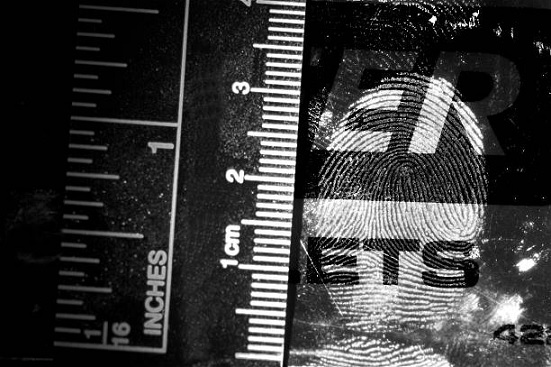In today’s digital age, where our lives are increasingly intertwined with technology, digital forensics investigation has emerged as a critical field that unveils the secrets hidden within the digital realm. As technology continues to evolve, so do the methods and tools used in digital forensics. In this essay, we will explore the fascinating world of digital forensics investigation, delving into its importance, methodologies, and the challenges it faces in the ever-expanding digital universe.
The Significance of Digital Forensics Investigation
Digital forensics investigation is a branch of forensic science dedicated to uncovering and analyzing electronic data to investigate and prevent cybercrimes. Its significance is underscored by several key factors:
Crime Detection and Prevention: Digital forensics plays a vital role in identifying and prosecuting cybercriminals. It helps law enforcement agencies track down and bring to justice those who commit crimes in the digital space, such as hacking, fraud, and identity theft.
Litigation Support: In legal cases, digital forensics provides evidence that can be used in court. This includes data recovery, analysis of digital evidence, and expert witness testimony.
Data Recovery: Digital forensics aids in recovering lost or deleted data, which is valuable in criminal investigations, corporate disputes, and even personal situations.
Cybersecurity: Understanding how cybercrimes are committed and the vulnerabilities that criminals exploit is crucial for bolstering cybersecurity measures and safeguarding critical infrastructure.
Methodologies in Digital Forensics Investigation
Digital forensics investigation involves a series of methodologies, each tailored to address specific aspects of an investigation:
Seizure: The first step in digital forensics is to acquire and secure the electronic device or storage media in question. This ensures that the evidence remains intact and unaltered.
Identification: Investigators identify the type of data and devices involved in the case. This includes recognizing the operating systems, file systems, and potential evidence sources.
Preservation: Preservation involves creating a forensic copy of the data to prevent any changes or alterations to the original evidence. This copy, called a forensic image, serves as the basis for analysis.
Analysis: Forensic experts analyze the data, searching for relevant evidence. This includes examining file timestamps, hidden files, and potential signs of tampering or encryption.
Documentation: Throughout the investigation, meticulous documentation is maintained to create a trail of the actions taken, ensuring transparency and accountability.
Reporting: Investigators compile their findings into a comprehensive report, detailing the evidence, methodology, and conclusions drawn from the analysis. This report is often used in legal proceedings.
Challenges in Digital Forensics
The field of digital forensics faces several challenges as it continues to evolve alongside technology:
Encryption: The increasing use of encryption makes it challenging to access and analyze data, even with the proper legal authority.
Anti-Forensic Tools: Cybercriminals are using anti-forensic tools to cover their tracks, making it more difficult to detect their activities.
Data Volume: The sheer volume of data that needs to be analyzed can overwhelm investigators, making it crucial to develop efficient search and analysis methods.
Digital Evidentiary Standards: The development of clear and widely accepted standards for digital evidence is an ongoing challenge in the field.
Cross-Border Jurisdiction: Digital forensics investigations often cross international boundaries, raising complex jurisdictional and legal issues.
The Future of Digital Forensics
As technology advances, digital forensics is likely to evolve in the following ways:
Big Data Analytics: With the increasing volume of data, digital forensics will rely more on big data analytics tools to sift through and make sense of large datasets.
Machine Learning and AI: Machine learning and artificial intelligence will play a significant role in automating the analysis of digital evidence, aiding investigators in identifying patterns and anomalies.
Blockchain Forensics: As blockchain technology becomes more prevalent, forensic experts will need to develop new methods for investigating and tracking transactions on these decentralized networks.
Cloud Forensics: The migration of data to the cloud will necessitate the development of specific methodologies for investigating cloud-based evidence.
IoT Forensics: The proliferation of Internet of Things (IoT) devices will require digital forensics experts to investigate a broader range of interconnected technologies.
Ethical Considerations in Digital Forensics
Digital forensics investigators must adhere to strict ethical guidelines to maintain the integrity of their work. Key ethical considerations include:
Privacy: Respecting individuals’ privacy and handling their personal data with care is paramount. Investigators must ensure that their actions are proportionate to the investigation.
Transparency: Investigators should be transparent about their methods and the limitations of their findings, ensuring their work can be scrutinized and verified.
Continual Education: The fast pace of technological change requires digital forensics professionals to engage in continual education to stay updated on the latest tools and techniques.
Impartiality: Investigators must remain impartial and objective, basing their conclusions on evidence rather than assumptions.
Legal Framework: Investigators must operate within the boundaries of the law and respect the rights of individuals under investigation.
Conclusion: Digital Forensics in the Digital Age
Digital forensics investigation is a crucial component of modern law enforcement, legal proceedings, and cybersecurity efforts. As technology continues to advance, so too must the methods and tools used in digital forensics. This field’s significance is underscored by its role in detecting and preventing cybercrimes, preserving evidence, and supporting legal processes. In the ever-expanding digital universe, digital forensics will remain at the forefront of safeguarding individuals and organizations from the potential threats lurking in the digital world.
